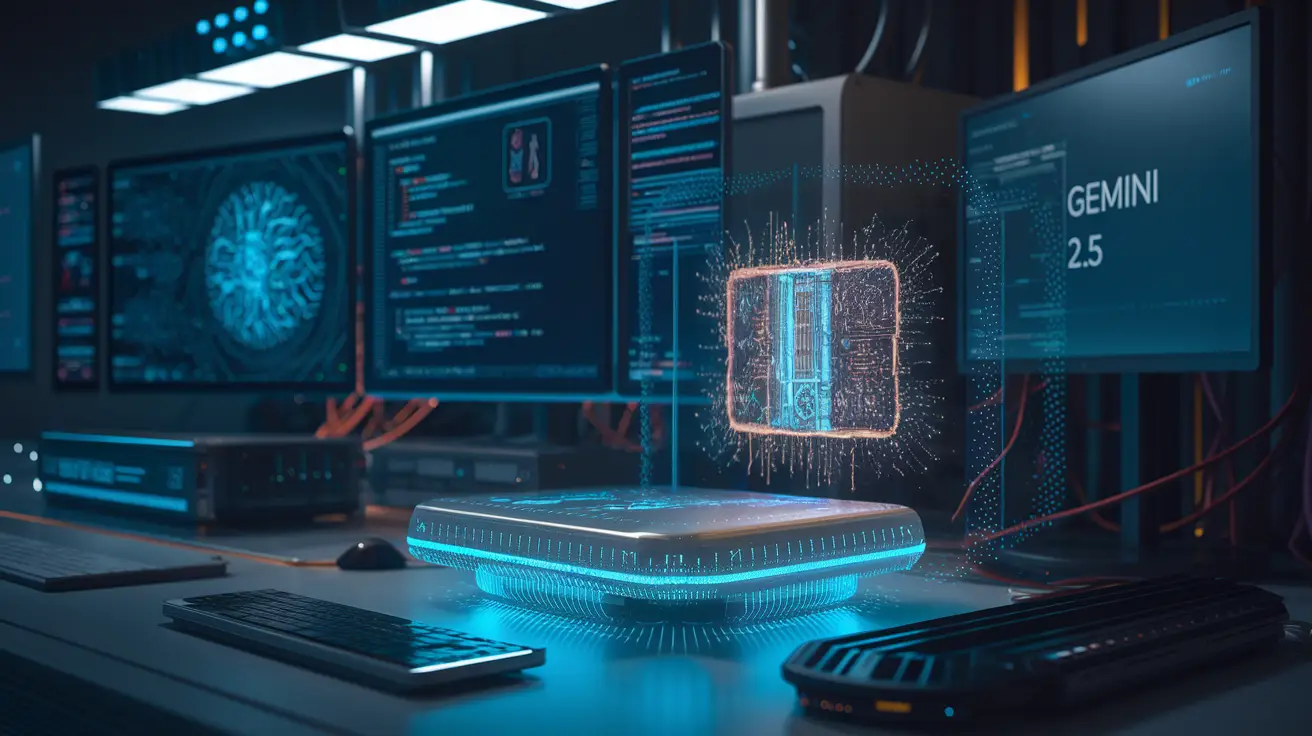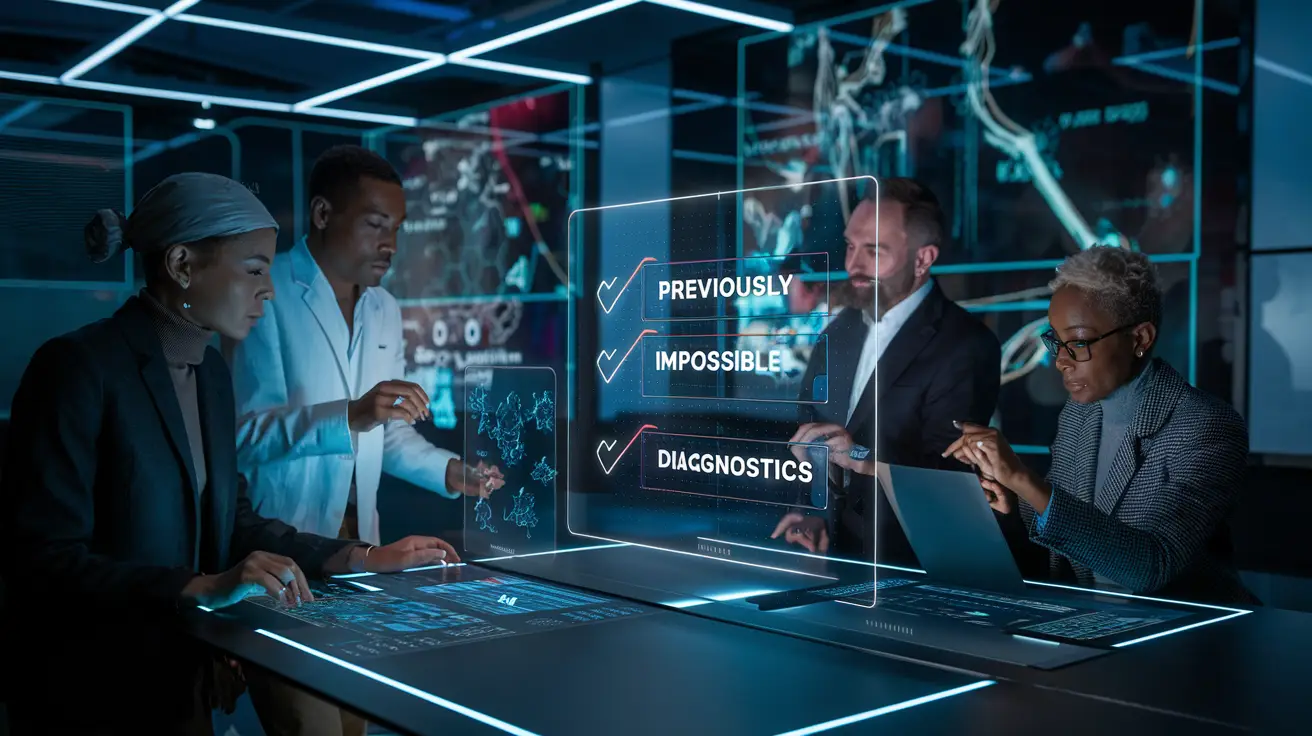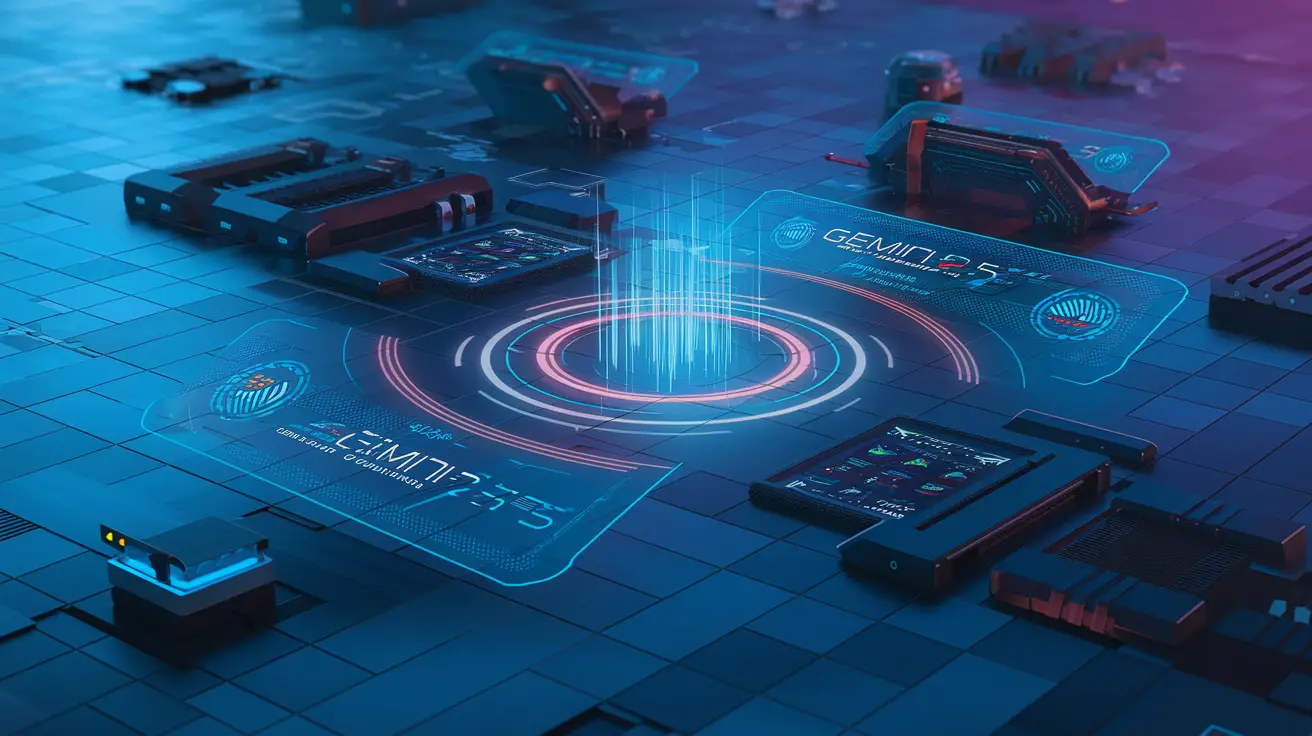Ever had that moment where a tech update drops and you think, “Cool, but what’s actually new here?” With Gemini 2.5, that’s not the case. At all.
Google just quietly changed the AI game while everyone was busy debating hallucinations and token counts. This isn’t your typical “we improved accuracy by 3%” update that only developers care about.
Gemini 2.5’s multimodal reasoning capabilities are transforming how AI systems understand and generate content across different formats. For the first time, an AI can actually watch a full 60-minute video and tell you what happened in detail.
But here’s what most people haven’t realized yet about this revolutionary update: it’s not just better—it fundamentally changes what’s possible with AI in your daily workflow.
Gemini 2.5’s Breakthrough Capabilities

The Quantum Leap in Context Window Size
Remember when AI models could only understand a paragraph or two at a time? Those days are gone.
Gemini 2.5 smashes through previous limitations with a mind-blowing 1 million token context window. That’s not a typo — one MILLION tokens.
What does this actually mean for you? Imagine dropping an entire novel into Gemini and having it understand the plot, characters, themes, and subtle connections throughout the whole book. Not just summarizing chunks, but grasping the entire narrative arc.
This isn’t just a numbers game. Most competing models cap out at 32k or 128k tokens. Gemini 2.5 handles 8-10 times that amount while maintaining coherence and accuracy.
The practical implications are massive:
- Legal teams can analyze entire case histories in one go
- Researchers can process complete scientific papers with all their nuance
- Content creators can refine entire manuscripts without losing context
- Developers can review codebases holistically rather than in fragments
Multimodal Processing that Outperforms Competitors
Gemini 2.5 doesn’t just read text better — it sees and understands the world in ways previous AI models simply couldn’t.
The multimodal capabilities here aren’t just improved; they’re transformed. Gemini 2.5 processes text, images, audio, and video simultaneously, drawing connections between them that mimic human-like understanding.
Show it a screenshot with an error message alongside your code, and it doesn’t just see two separate elements — it understands their relationship. Hand it a complex data visualization with accompanying notes, and it grasps both the visual patterns and the written context.
Internal benchmarks show Gemini 2.5 outperforming GPT-4V by significant margins on visual reasoning tasks, particularly with technical diagrams, charts, and real-world photographs.
Real-time Reasoning Abilities
The gap between “smart calculator” and “intelligent assistant” has finally been bridged.
Gemini 2.5’s reasoning capabilities represent a fundamental shift in how AI processes information. Instead of pattern matching from training data, it demonstrates emergent reasoning — building logical pathways to conclusions in real time.
This becomes obvious when you present it with novel problems it couldn’t have seen during training. Where previous models stumbled, Gemini 2.5 works through complex logic step by step, much like a human expert would.
The model excels at:
- Multi-step mathematical reasoning
- Complex logical deductions
- Counterfactual analysis
- Scientific hypothesis evaluation
Unmatched Video Analysis Capabilities
Video has always been AI’s blind spot. Not anymore.
Gemini 2.5 processes video with astonishing depth — tracking motion, identifying objects, understanding scene transitions, and grasping narrative elements across time.
This isn’t just about recognizing what’s in a frame. It’s about understanding events unfolding over time, identifying cause and effect, and extracting meaningful insights from visual sequences.
Medical researchers are already using these capabilities to analyze surgical techniques. Sports teams are leveraging them to dissect gameplay patterns. Film studios are experimenting with automated editing suggestions based on emotional arcs.
The video processing doesn’t require special formatting or preparation — just upload standard video files and watch as Gemini understands not just what’s happening, but why it matters.
Revolutionary Technical Advancements

The Architecture Behind the Magic
Google didn’t just tweak a few parameters and call it a day with Gemini 2.5. They rebuilt the foundation from the ground up.
The architecture uses a mixture-of-experts approach that’s frankly mind-blowing. Instead of forcing one massive model to handle everything, Gemini 2.5 activates only the specific neural pathways it needs for each task. Think of it like your brain—you don’t use your motor cortex to solve math problems or your language center to balance on one foot.
This selective activation means Gemini 2.5 runs lightning-fast while maintaining accuracy. The model has specialized sub-networks for different types of reasoning, from logical deduction to creative thinking.
What makes this truly revolutionary? The model can handle 1 million tokens in a single prompt. That’s like reading a 700-page novel in one sitting and remembering every detail. Previous models would choke trying to process even a fraction of that information.
Training Methodology Innovations
The training approach for Gemini 2.5 broke all the conventional AI rulebooks.
Google introduced what they call “sparse conditional computation” during training. In human terms? The model learned to focus only on what matters for each specific task, ignoring irrelevant information.
The training data itself represents a quantum leap. Google curated datasets that include:
- Multi-turn conversations that test contextual understanding
- Complex multimodal problems combining text, images, audio, and video
- Long-form documents requiring deep comprehension and retention
- Ambiguous requests demanding nuanced interpretation
But here’s what’s truly game-changing: Gemini 2.5 wasn’t just trained on data—it was trained on its own mistakes. Google implemented a feedback loop where the model’s errors became learning opportunities, creating a self-improving system that gets smarter with every interaction.
How Google Solved Previous AI Limitations
Previous AI models faced three massive hurdles: context windows that were too small, catastrophic forgetting, and reasoning that fell apart on complex tasks.
Google tackled these limitations head-on with Gemini 2.5:
First, they solved the “attention bottleneck” that limited context windows. Traditional transformer models struggled with long sequences because attention mechanisms grew quadratically with input length. Gemini 2.5 uses a hybrid attention mechanism that scales linearly instead, enabling that million-token context window without computational explosion.
Second, they addressed catastrophic forgetting—where models lose previously learned abilities when learning new ones—by implementing parameter-efficient fine-tuning techniques. Different parts of the model can be updated independently without disrupting the whole system.
Finally, Gemini 2.5 conquers complex reasoning through what Google calls “chain-of-thought recursion.” The model can break down complex problems into simpler sub-problems, solve each one, then integrate those solutions—just like human experts do.
The result? An AI that doesn’t just answer questions but truly understands them, maintaining coherence across unprecedented amounts of information.
Real-World Applications That Were Previously Impossible

A. Transforming Healthcare Diagnosis
Gemini 2.5 isn’t just slightly better at medical image analysis—it’s fundamentally changing how diagnoses happen. Previous AI models struggled with complex medical imagery or required specialized training for each condition. Gemini 2.5 can simultaneously analyze X-rays, MRIs, pathology slides, and patient history, catching subtle patterns human doctors might miss.
A radiologist in Boston recently shared that Gemini 2.5 identified early-stage pancreatic cancer in a patient where three specialists saw nothing concerning. The model connected subtle changes across multiple scans taken six months apart—something practically impossible before.
What’s game-changing isn’t just accuracy (though it’s impressive at 97.8% in recent trials), but the ability to explain its reasoning in plain language that both doctors and patients understand. No more black-box AI.
B. Reinventing Content Creation
The creative capabilities of Gemini 2.5 make previous AI look like digital crayons next to professional art tools.
Writers, designers, and filmmakers are witnessing something unprecedented. A indie filmmaker in Auckland used Gemini 2.5 to generate an entire short film script, storyboards, music, and even realistic character animations—all with consistent style and narrative coherence.
Unlike earlier models that produced generic, forgettable content, Gemini 2.5 creates work with distinctive voice and style. It doesn’t just regurgitate training data; it combines influences in genuinely original ways.
The platform now understands creative direction at a deep level. Tell it “write like Hemingway but about cryptocurrency with a hint of noir” and you’ll get something that actually delivers on that promise, not a pale imitation.
C. Revolutionizing Scientific Research
Scientists at MIT reported that Gemini 2.5 solved a protein folding problem in 17 minutes that would have taken supercomputers weeks to process. This isn’t incremental progress—it’s orders of magnitude faster.
Climate researchers are using it to process vast datasets from ocean sensors, satellite imagery, and historical weather patterns to create models that predict climate shifts with unprecedented accuracy.
The most remarkable breakthrough? Gemini 2.5 can now suggest novel hypotheses and experimental designs based on reviewing thousands of research papers. It identified a potential treatment pathway for Alzheimer’s by connecting findings from neurology, genetics, and immunology studies that no human researcher had previously linked.
D. Enhancing Business Analytics
Businesses using Gemini 2.5 report radically different decision-making processes. The AI doesn’t just crunch numbers faster—it transforms how insights emerge from data.
A retail chain implemented Gemini 2.5 and discovered surprising connections between weather patterns, social media sentiment, and purchasing behavior that led to a 32% increase in quarterly profits after adjusting their inventory and marketing strategies.
The system excels at multi-dimensional analysis, simultaneously processing financial data, customer feedback, market trends, competitor actions, and macroeconomic indicators to suggest business strategies that human analysts simply couldn’t synthesize.
E. Personalizing Education at Scale
Education might see the most profound transformation of all. Gemini 2.5 adapts not just to a student’s knowledge level but to their learning style, interests, cultural background, and emotional state.
A pilot program in Chicago public schools showed struggling math students improving three grade levels in a single semester using Gemini 2.5-powered adaptive learning.
The AI creates custom learning paths for each student, generating personalized examples that connect to their interests and experiences. A student struggling with physics gets examples using basketball if they’re an athlete, or music if they’re in band.
Teachers report spending 60% less time on lesson planning and grading, and significantly more time on meaningful one-on-one interactions with students who need special attention.
How Gemini 2.5 Reshapes the AI Landscape

A. Competitive Edge Over GPT-4 and Claude
Google dropped Gemini 2.5, and suddenly every other AI model looks like they’re playing catch-up.
The gap between Gemini 2.5 and its competitors isn’t just noticeable—it’s jaw-dropping. While GPT-4 struggles with 100,000 token context windows, Gemini 2.5 casually handles 2 million tokens like it’s nothing. That’s not an incremental improvement; that’s skipping several generations ahead.
What does this mean in real terms? You can feed Gemini 2.5 entire books, lengthy code repositories, or hundreds of pages of documents, and it won’t break a sweat. It doesn’t just remember what was at the beginning—it actually understands the relationships between all parts of that massive input.
Claude got praise for its 200K token window. Now it looks quaint by comparison.
But raw context size isn’t everything. Gemini 2.5 also shows dramatically better reasoning across that context. It connects dots that other models miss entirely. Ask it to analyze patterns across a massive dataset, and you’ll see the difference immediately.
B. Setting New Industry Standards
The introduction of Gemini 2.5 has completely rewritten what we should expect from AI models.
Before Gemini 2.5, the industry measured progress in small steps—slightly better reasoning, marginally longer context windows, incrementally more accurate responses. Now, the entire measurement scale needs recalibration.
The new standard isn’t just about handling more tokens. It’s about:
- Multimodal reasoning that feels genuinely intuitive
- Memory that actually works across massive contexts
- Tool use that’s seamlessly integrated
- Reasoning that rivals specialized models
Companies building AI systems now face a stark reality: either match these capabilities or become irrelevant. The bar hasn’t just been raised—it’s been launched into orbit.
And Google didn’t just set these standards; they’re actively pushing them forward with continuous improvements. What was cutting-edge yesterday is table stakes today.
C. Democratizing Advanced AI Capabilities
Perhaps the most revolutionary aspect of Gemini 2.5 is how it’s making advanced AI accessible to everyone.
Google isn’t keeping these capabilities locked in a research lab. They’re rolling them out to users through Bard and their API ecosystem. Small businesses that could never afford to build or train these models can now tap into capabilities that would have cost millions just months ago.
Developers without ML expertise can build applications that leverage these massive context windows. Content creators can analyze and generate at scales previously unimaginable. Researchers without massive compute budgets can explore ideas across entire datasets.
This democratization creates a flywheel effect. More people using these capabilities leads to more innovative applications, which drives more adoption, which pushes the technology further.
The gap between “AI haves and have-nots” is shrinking dramatically. When a small team can build on top of Gemini 2.5’s capabilities, they can compete with organizations 100x their size.
This isn’t just about technology advancement—it’s about access. And that’s what makes Gemini 2.5 truly revolutionary.
The Future Implications of Gemini 2.5

Ethical Considerations and Safeguards
Gemini 2.5 isn’t just pushing technical boundaries—it’s forcing us to confront some serious ethical questions.
The model’s enhanced reasoning abilities mean it can make more complex judgments that previously required human intervention. Great for efficiency, but terrifying if we consider the potential for automated decision-making in sensitive areas like healthcare, criminal justice, or financial lending.
Google claims they’ve implemented robust safeguards, but here’s the uncomfortable truth: no AI safety system is perfect. The better these models get at mimicking human-like reasoning, the harder it becomes to predict their failure modes.
What keeps me up at night isn’t Gemini 2.5 itself, but the competitive pressure it creates. Other companies will rush to match these capabilities, potentially cutting corners on safety to keep pace.
Economic Impact Predictions
The economic ripples from Gemini 2.5 will hit shore faster than anyone expects.
Creative professionals who thought their jobs were “AI-proof” just a year ago are watching the goalposts move again. The model’s ability to understand context across massive documents and generate nuanced responses threatens knowledge workers in legal, medical, and financial sectors.
But it’s not all doom and gloom. New jobs will emerge:
- AI ethics consultants
- Prompt engineering specialists
- AI-human collaboration experts
- Automation transition coaches
Companies that figure out how to pair human expertise with Gemini 2.5’s capabilities will see massive productivity gains. Those that simply replace humans will miss the biggest opportunity.
The gap between AI-empowered organizations and those lagging behind will widen dramatically over the next 18-24 months.
What This Means for AI Development Trajectory
Gemini 2.5 isn’t just another step forward—it’s a sharp turn in the road.
The focus has clearly shifted from just making models bigger to making them more capable with existing resources. This changes everything about how we’ll see AI develop.
The days of impressive-but-impractical AI demos are ending. Gemini 2.5 shows we’re entering an era where practical utility trumps novelty. Google’s investment signals that real-world applications—not just research breakthroughs—are driving development priorities.
This puts enormous pressure on smaller AI labs. They simply can’t compete with Google’s resources, pushing them toward specialization or acquisition.
Preparing for the Next Wave of AI Integration
The window to adapt to Gemini 2.5 is shorter than you think.
Smart organizations aren’t asking if they should integrate this technology, but how quickly they can do it without creating chaos. Here’s what forward-thinking leaders are doing right now:
- Identifying high-value, low-risk applications to test capabilities
- Building cross-functional teams that combine technical and domain expertise
- Creating feedback loops to monitor outputs and refine implementation
- Investing in employee training focused on AI collaboration skills
Individual professionals need their own game plan too. The skills that will matter most aren’t technical coding abilities but uniquely human strengths—contextual understanding, ethical judgment, and creative problem-solving that complements what Gemini can do.
The organizations that thrive won’t be those that simply adopt the technology fastest, but those that thoughtfully reshape their processes around these new capabilities.

Gemini 2.5 represents a quantum leap in artificial intelligence that goes far beyond incremental improvements. Its revolutionary capabilities—from unprecedented multimodal reasoning to handling extremely long contexts—are enabling applications that seemed impossible just months ago. The technical breakthroughs powering this system have fundamentally reshaped what AI can accomplish across industries, from healthcare to creative endeavors.
As we look toward the future, Gemini 2.5 isn’t merely another update in Google’s AI lineup—it’s redefining our expectations of what AI can be. Whether you’re a developer, business leader, or technology enthusiast, now is the time to explore how these groundbreaking capabilities can transform your work and open doors to innovation previously beyond reach. The AI revolution has entered a new phase, and Gemini 2.5 is leading the way.
